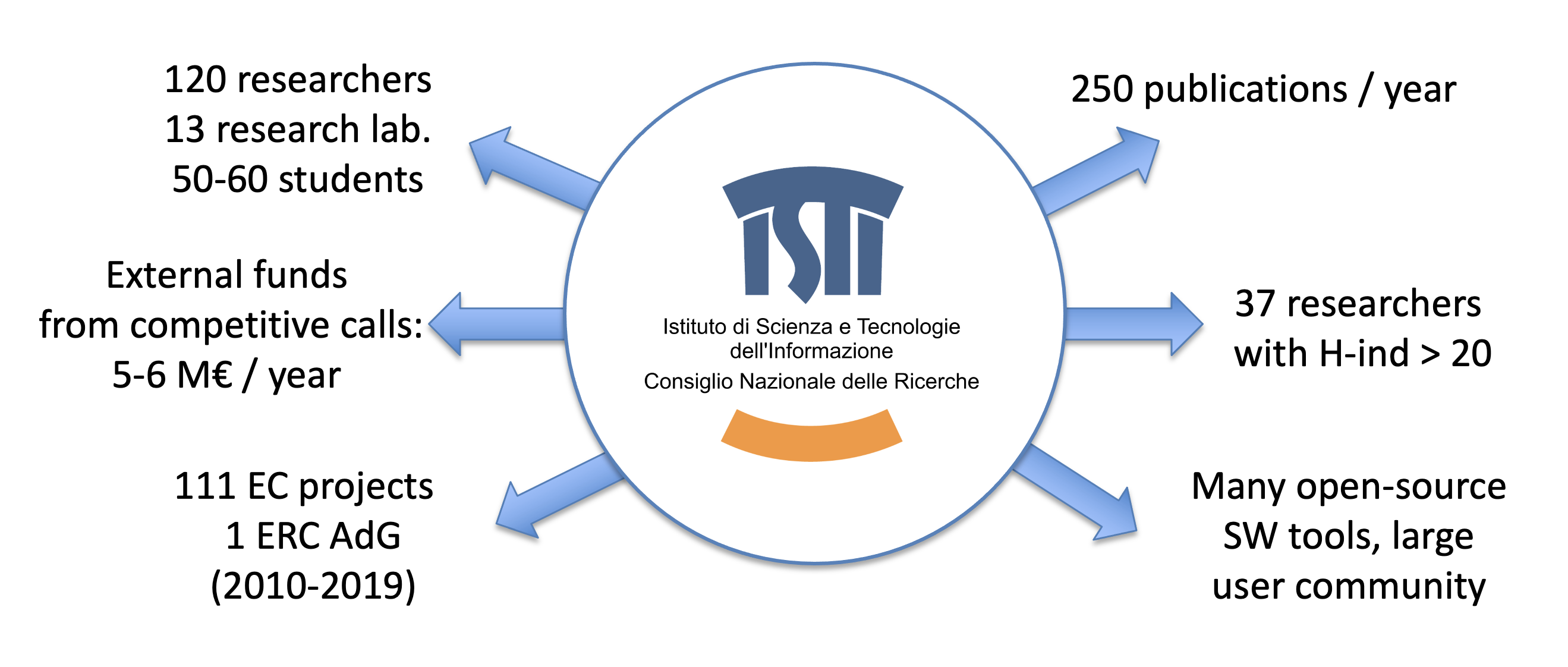
The Institute of Information Science and Technologies (ISTI) is an institute of the Italian National Research Council (CNR). The Institute is located in the CNR Research Area of Pisa. ISTI was established in July 2000 as a result of a merger between the Istituto CNUCE (CNUCE-CNR) and the Istituto di Elaborazione dell'Informazione (IEI-CNR). ISTI is named in honor of Alessandro Faedo, former Rector of the University of Pisa and President of CNR, in recognition of his important contribution to the advancement of Information Science and Technologies in the Italian academic communities. The Institute became fully operational in 2002.
Mission
The Institute is committed to scientific excellence and to playing an active role in technology transfer. The domain of competence covers Information Science, related technologies and a wide range of applications. The activity of the Institute aims at increasing knowledge, developing and testing new ideas and widening the application areas of research.
A distinctive feature of Information Technology is the rapid pace of developments and the easy flow of information between diverse research communities and between academia and wide sectors of industry, business, and society at large. If it is to be vital and effective, research in this domain requires constant attention and prompt reaction to stimuli and to new opportunities. A further requirement is the close integration of all components of the research community.
ISTI is actively involved in collaborations with the academic world and in cooperative research and development programs, both national and international. ISTI is highly successful in securing research funds on competitive calls, at the national and international level. Focusing on international calls, projects issued by the European Commission (EC) and the European Research Council (ERC) are highly competitive and ISTI has a notable success rate. The quality of the research results produced by ISTI can be assessed by checking the quality of the scientific production, even using the available web-based metrics (examples are Scopus or Google Scholar); among the data reported by those systems, the h-index plays an important role in characterizing the prolificity and value of the publications produced by a single scientist.
In recognition of the importance of training in today’s Information Society, ISTI pays great attention to involving doctoral students and post-doctoral fellows in research activities and actively participates in the doctoral programs of the University of Pisa and other partner universities.
Some Figures
The activities and results of ISTI can be presented in a synthetic manner using some figures:

H-index figures are based on data published by Google Scholar on Dec. 2019
Historical Notes
The two Institutes - CNUCE and the Istituto di Elaborazione dell’Informazione (IEI) - that were merged into ISTI had different histories.
The CNUCE (Centro Nazionale Universitario di Calcolo Elettronico) was founded on 5th July 1965 as the National University Computing Center with the goal of supporting national universities faculties. CNUCE establishment was promoted by Alessandro Faedo, who jointly promoted a partnership with the IBM Scientific Center in Pisa.
In 1973 CNUCE became part of the National Research Council (CNR) under the Committee for Engineering and Architecture. Besides the necessary economic support for developing Computing Services which by then had become widespread in Italy, embedding within CNR provided CNUCE with an appropriate framework for conductiong research in Computer Science, which was a remarkable advancement.
The beginnings of the Istituto di Elaborazione dell'Informazione (IEI) can be traced back to 1954 when Pisa University, on the advice of the Nobel laureate Enrico Fermi and financially backed by the provinces of Pisa, Lucca and Livorno decided to design and construct a computer intended entirely for scientific use, the first in Italy. The CSCE (Center for Studies on Electronic Computing) was thus founded, and in 1961 the CEP - Pisan Electronic Computer - was inaugurated.
In 1962 the CSCE became part of the CNR, and in 1968 was renamed Istituto di Elaborazione dell'Informazione (IEI).